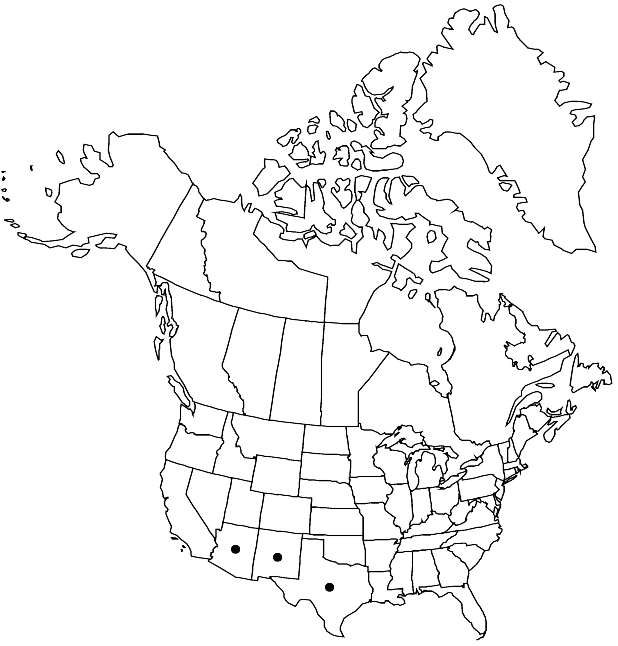Thelypodiopsis purpusii
Contr. Gray Herb. 206: 14. 1976.
Annuals; (often glaucous), glabrous throughout. Stems unbranched or branched distally, 1.5–5 (–7) dm. Basal leaves (soon withered); not rosulate; petiole 0.5–3 cm; blade oblanceolate, 1.5–9 cm × 5–30 mm, margins pinnatifid to dentate-sinuate. Cauline leaves (proximalmost) petiolate or (distal) sessile; blade (proximalmost) oblanceolate, (distal) ovate to oblong, base subamplexicaul or auriculate, margins (proximalmost) pinnatifid to dentate-sinuate, or (distal) entire. Racemes lax. Fruiting pedicels ascending to divaricate, straight, 3–7 (–10) mm. Flowers: sepals erect, green or purplish, 3–4.5 × 0.7–1.2 mm; petals white, oblanceolate, 4–5.5 × 1–1.5 mm, claw 2–3 mm; median filament pairs 3–4 mm; anthers ovate, 0.5–0.8 mm; gynophore 0.2–0.4 mm. Fruits divaricate to ascending or spreading, straight or curved, torulose, 3–6.5 cm × 1–1.2 mm; ovules 46–114 per ovary; style subclavate, 0.7–1.5 mm; stigma entire or obscurely 2-lobed. Seeds 0.9–1.2 × 0.5–0.7 mm.
Phenology: Flowering Feb–May.
Habitat: Juniper woodlands, rocky slopes, shale grounds, loose gypsum, barren areas, clay banks of rocky hillsides, shrub communities
Elevation: 1400-2100 m
Distribution

Ariz., N.Mex., Tex., Mexico (Coahuila)
Discussion
Selected References
None.
Lower Taxa
"elongated" is not a number."thick" is not a number."dm" is not declared as a valid unit of measurement for this property."dm" is not declared as a valid unit of measurement for this property.